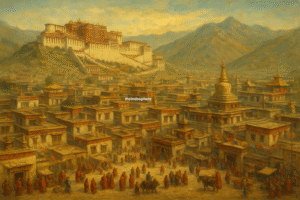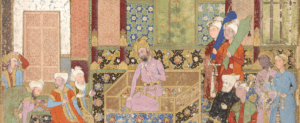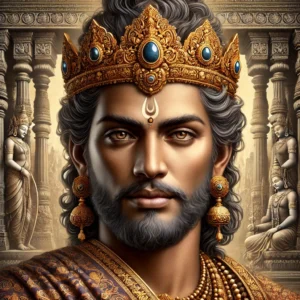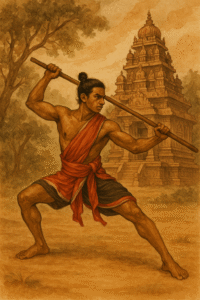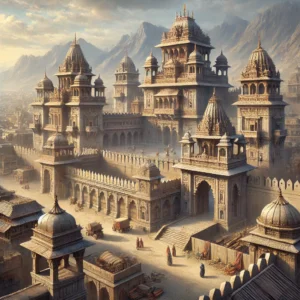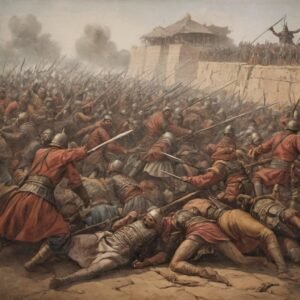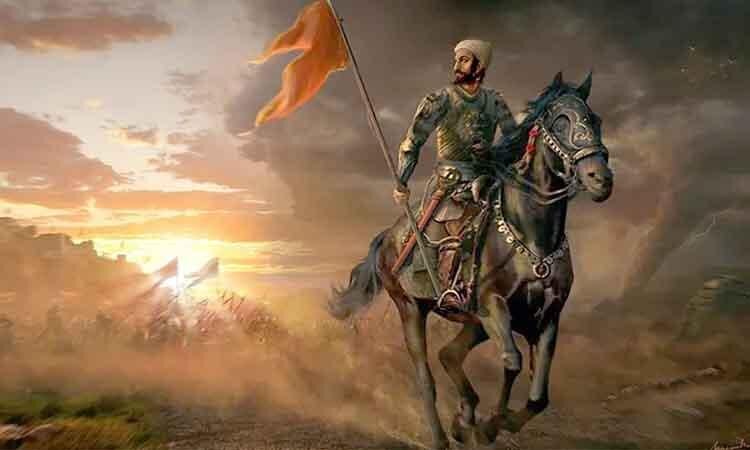
Chhatrapati Shivaji Maharaj
Chhatrapati Shivaji Maharaj stands as one of the most visionary and influential leaders in Indian history. The founder of the Maratha Empire, he pioneered the concept of Hindavi Swaraj—self-rule for the indigenous people—at a time when foreign and oppressive regimes dominated the Indian subcontinent. His legacy as a warrior, administrator, and statesman continues to inspire generations.
Political Landscape Before Shivaji
The Indian subcontinent in the 16th and 17th centuries was fragmented and controlled by various ruling powers, including the Mughal Empire, Deccan Sultanates (Bijapur, Golconda, Ahmednagar), and European colonial forces (Portuguese, Dutch, and British). The Mughals under Akbar and later Shah Jahan expanded their dominion aggressively, while the Deccan Sultanates ruled over vast territories, often in conflict with each other. The oppressive policies of these rulers—exorbitant taxation, religious persecution, and forced conversions—led to widespread resentment, particularly among the local Marathi-speaking populace.
Shivaji’s father, Shahaji Bhosale, was a military commander who served under the Ahmadnagar Sultanate before switching allegiance to Bijapur. Though a skilled strategist, Shahaji lacked autonomy and was often entangled in Deccan politics. These circumstances deeply influenced Shivaji, who sought complete sovereignty and self-rule for his people.
Early Life and Rise to Power
Born on February 19, 1630, at Shivneri Fort, Shivaji was raised under the guidance of his mother, Jijabai, who instilled in him values of patriotism, courage, and justice. He received military training from skilled warriors and strategists like Dadaji Kondadev.
Shivaji’s rise began with his first conquest in 1645 at the age of 16 when he captured the strategically important Torna Fort. He followed this victory by seizing Kondana, Purandar, and Rajgad forts from the Adilshahi Sultanate of Bijapur. His guerrilla warfare tactics and diplomatic acumen allowed him to strengthen his position, gradually asserting his dominance over western Maharashtra.
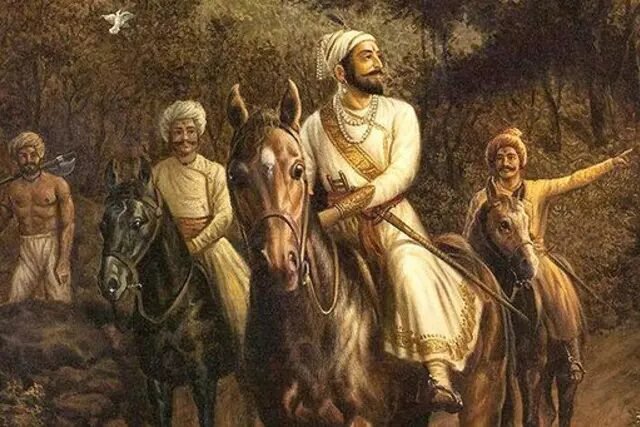
Guerrilla Warfare and Expansion of the Maratha Empire
Shivaji pioneered guerrilla warfare tactics, known as Ganimi Kava, which emphasized speed, surprise, and adaptability. His troops used the rugged terrain of the Western Ghats to their advantage, executing quick raids on enemy forts and supply lines before retreating into the mountains. His military strategies included:
- Night attacks and ambushes to minimize casualties.
- Psychological warfare to instill fear in enemy ranks.
- Securing mountain passes to control trade and movement.
Through these tactics, he captured over 300 forts, including Sinhagad, Pratapgad, Rajgad, and Raigad, the latter of which became his capital. His territorial expansion extended into Konkan, Karnataka, and even parts of Tamil Nadu, significantly increasing Maratha influence across the Deccan region.
The Coronation and Establishment of the Maratha Empire
On June 6, 1674, Shivaji was crowned as Chhatrapati at Raigad Fort, marking the official establishment of the Maratha Empire. His coronation emphasized the indigenous sovereignty of India, a significant step against Mughal hegemony. He was proclaimed the rightful ruler with divine sanction, and his administration was based on fairness, meritocracy, and people-centric governance.
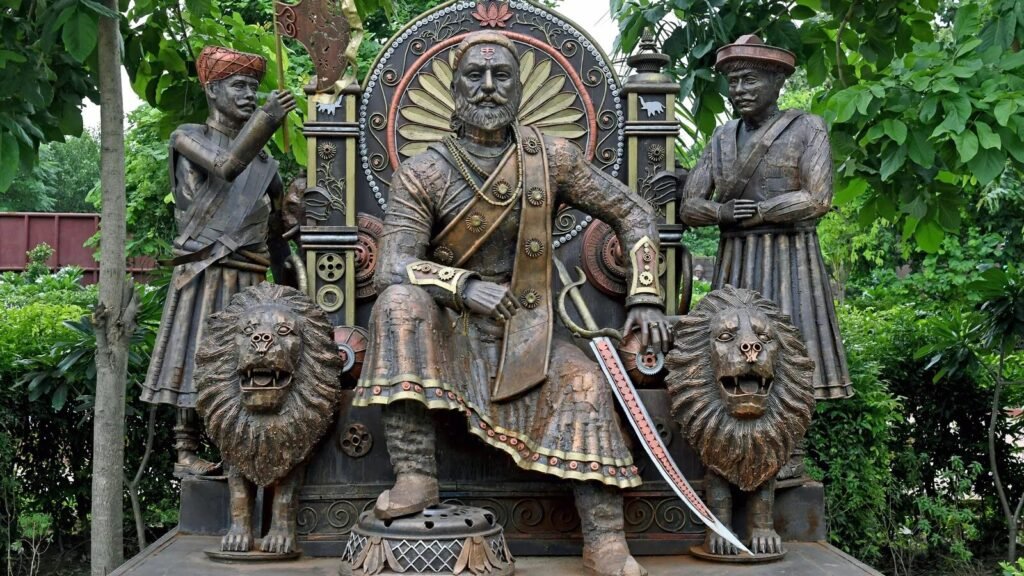
Key Individuals in the Establishment of the Maratha Empire
Several key individuals played crucial roles in Shivaji’s vision and expansion of the Maratha Empire:
- Jijabai: Shivaji’s mother, who was his biggest source of inspiration and instilled in him the values of justice and courage.
- Dadaji Kondadev: His mentor and administrator, who helped structure Shivaji’s early governance and military discipline.
- Tanaji Malusare: A trusted commander, known for the daring capture of Kondana Fort, later renamed Sinhagad in his honor.
- Kanhoji Angre: The naval chief who strengthened Maratha naval power and defended the Konkan coast from European traders.
- Netaji Palkar: A brilliant cavalry commander who played a significant role in various battles against the Mughals and Deccan Sultanates.
- Moropant Trimbak Pingle: Shivaji’s first Peshwa (Prime Minister), who laid the foundation for a structured Maratha administration.
- Baji Prabhu Deshpande: A heroic warrior who ensured Shivaji’s safe escape in the Battle of Pavan Khind, sacrificing his life for the cause of Swaraj.
Major Conflicts and Wars Under Shivaji
1. Conflict with the Adilshahi Sultanate (1645-1660)
Shivaji’s early victories alarmed Bijapur, leading Sultan Mohammed Adil Shah to send his formidable general, Afzal Khan, to subdue him in 1659. Shivaji, anticipating treachery, cleverly planned a meeting with Afzal Khan and killed him using a concealed weapon, the wagh nakh (tiger claws). This event marked a significant shift in Maratha power, and Shivaji swiftly captured key territories, including the strategically vital Pratapgad Fort.
2. Confrontation with the Mughals (1660-1666)
As Shivaji’s power expanded, he came into direct conflict with the Mughals, particularly Emperor Aurangzeb. In 1660, Aurangzeb appointed Shaista Khan as the governor of the Deccan to crush Shivaji’s rebellion. Shaista Khan captured Pune but suffered a humiliating defeat in 1663 when Shivaji orchestrated a daring night raid on his palace, wounding him and forcing him to retreat.
In 1664, Shivaji launched a naval attack on Surat, one of the Mughal Empire’s wealthiest trading ports, plundering it to finance his military campaigns. Enraged, Aurangzeb sought to capture him, leading to Shivaji’s invitation to Agra in 1666, where he was arrested. However, with remarkable ingenuity, Shivaji escaped by disguising himself in a fruit basket, marking one of the most legendary escapes in history.
3. Reconsolidation and Expansion (1667-1674)
Following his escape, Shivaji focused on strengthening his military, administrative, and naval power. He recaptured several forts and expanded his influence into southern India, including Karnataka and Tamil Nadu. His naval prowess allowed him to challenge European traders, particularly the Portuguese and British, asserting Maratha dominance over coastal trade routes.
Last Years and Legacy
Shivaji continued to expand his empire until his death on April 3, 1680. His legacy endured through his son, Sambhaji, and later through the Peshwas, who carried forward his vision, resisting Mughal dominance and shaping India’s political landscape.
Shivaji Maharaj is revered today as one of the greatest leaders in Indian history. His principles of governance, military strategies, and commitment to Hindavi Swaraj have inspired countless freedom fighters, including Bal Gangadhar Tilak, Subhas Chandra Bose, and other revolutionaries of the Indian independence movement. His tactics influenced the resistance against British colonial rule, as leaders adopted his methods of guerrilla warfare and strategic planning.
Statues, monuments, and institutions bear his name across India, and his legacy continues to be celebrated annually on Shivaji Jayanti. His life remains a testament to resilience, strategic brilliance, and the relentless pursuit of sovereignty, making him one of the most significant figures in Indian history.

